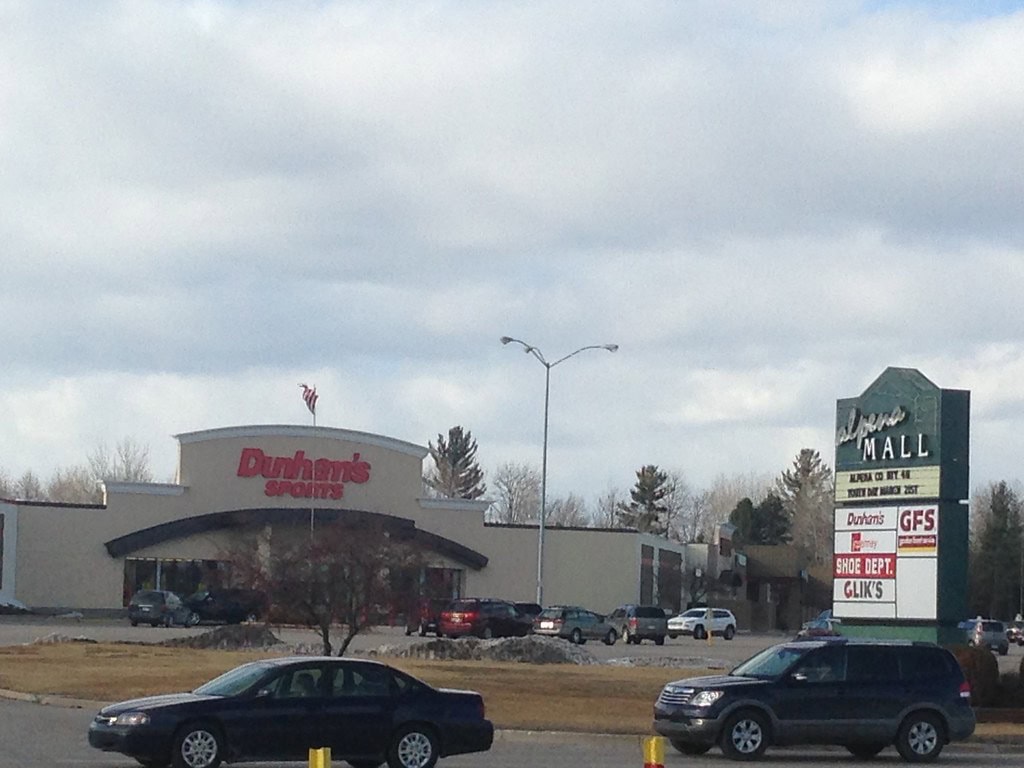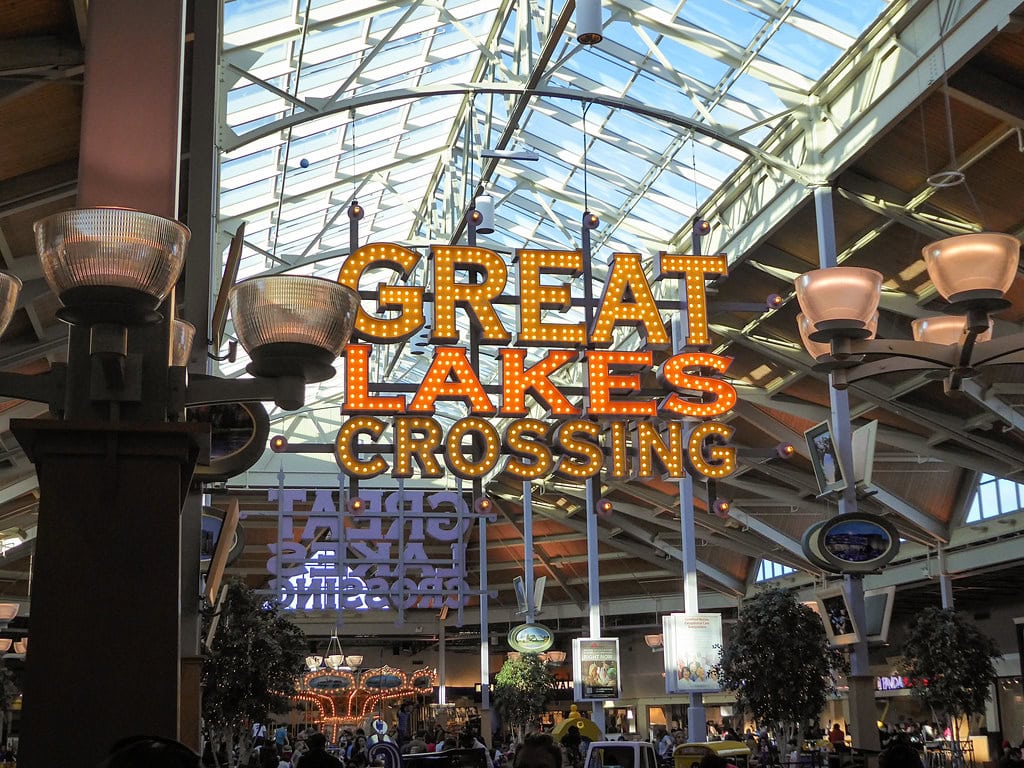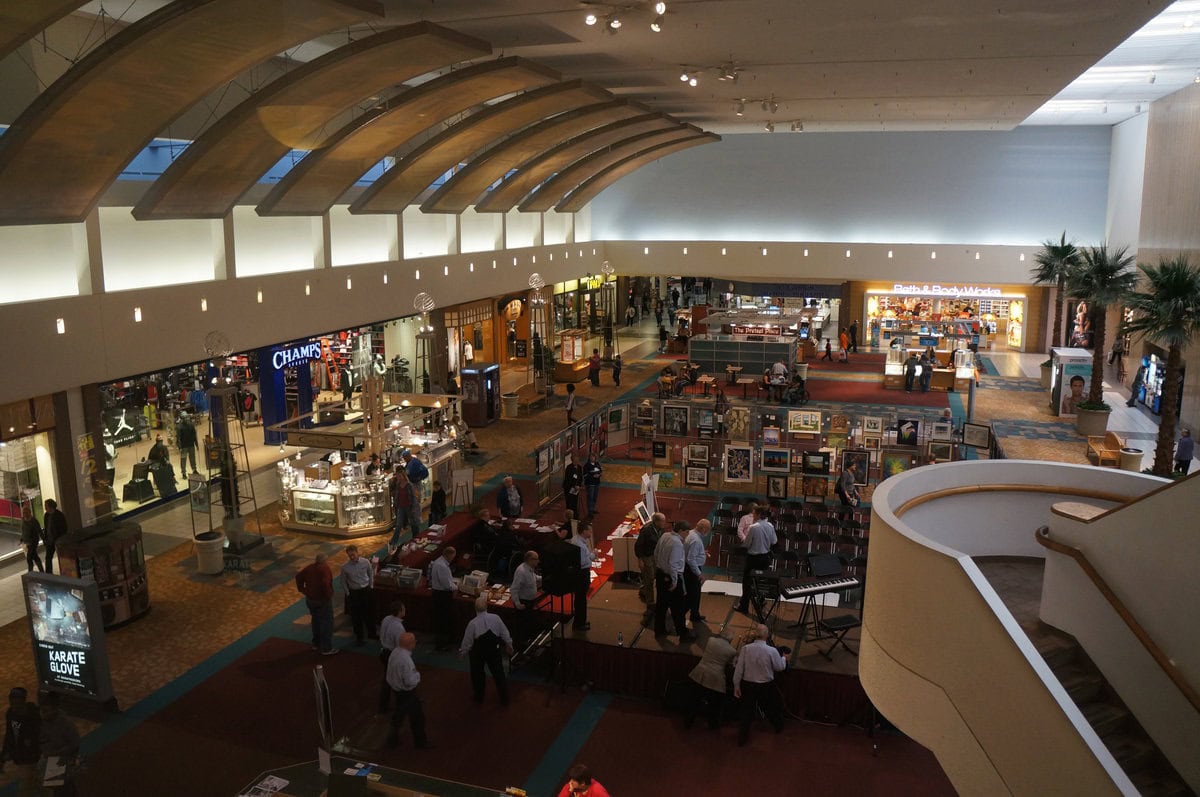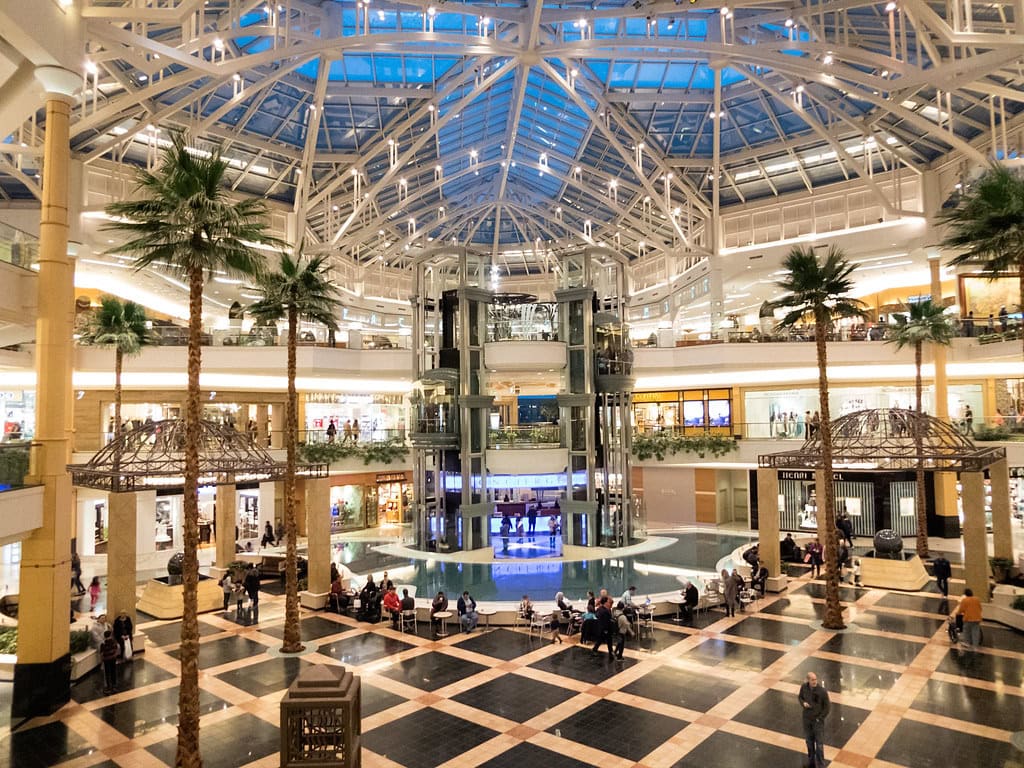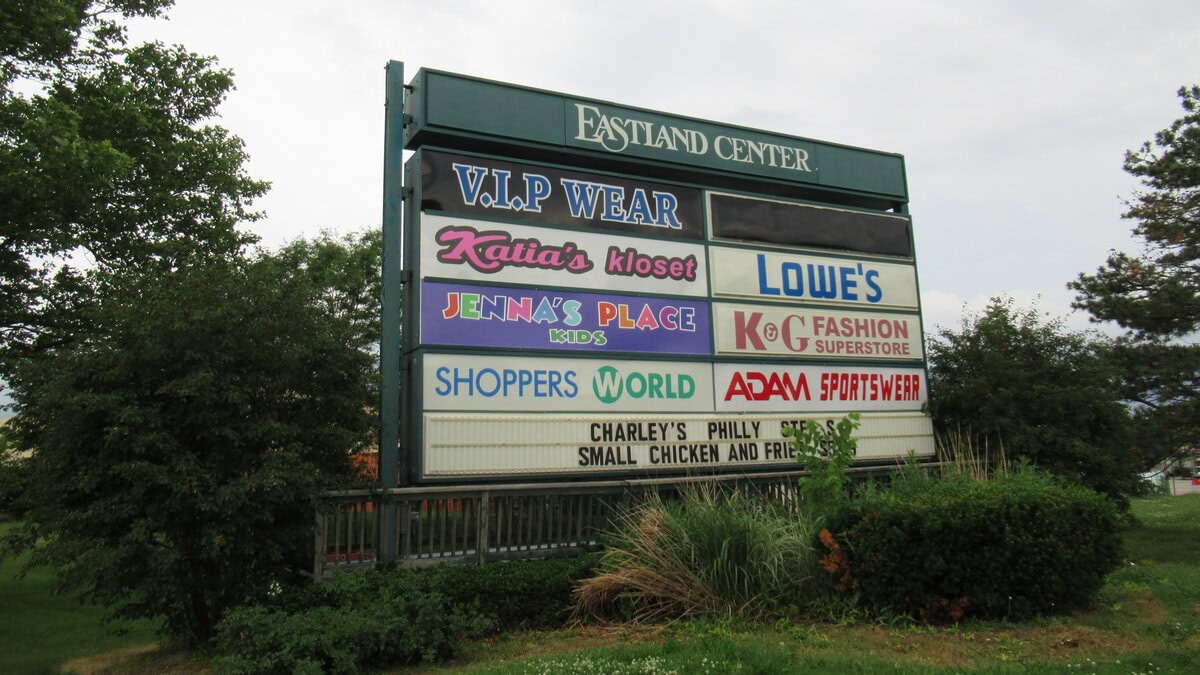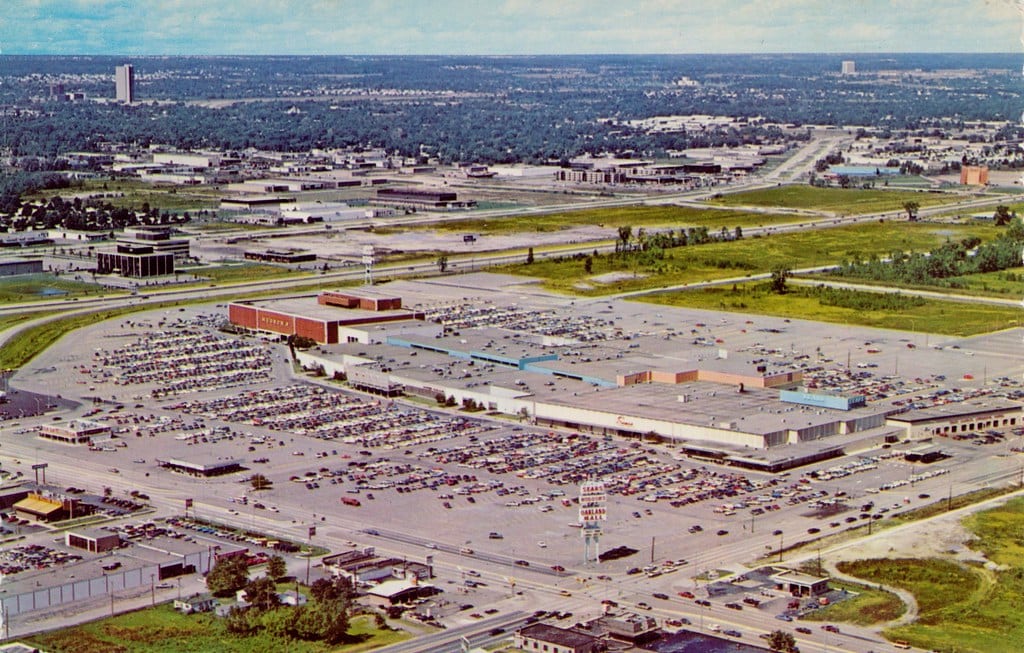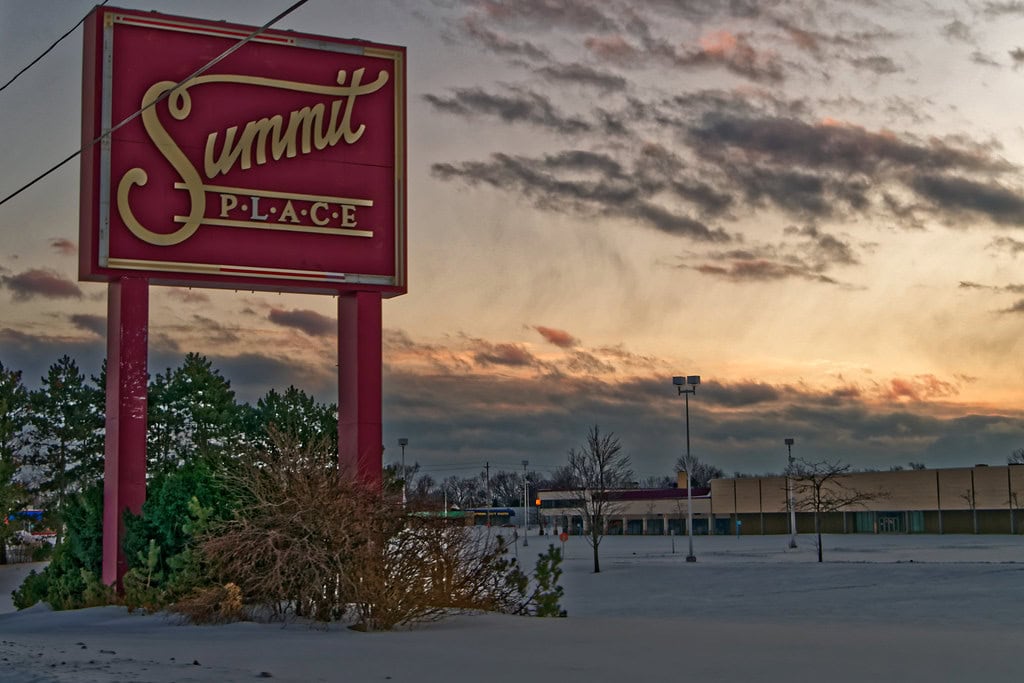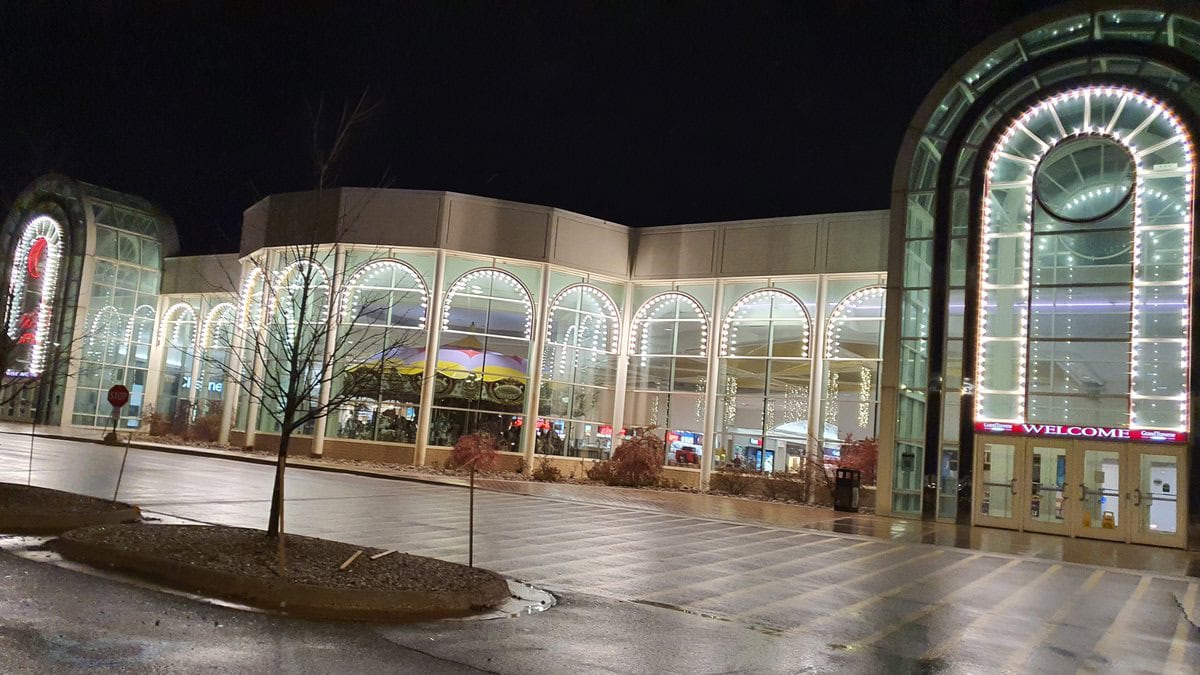Early Development and Retail Beginnings
Rogers Plaza Town Center, located in Wyoming, Michigan, opened its doors on August 3, 1961. At the time, it was a groundbreaking addition to the local shopping scene, marking the state's first enclosed shopping mall.
This innovative design provided shoppers with a climate-controlled space to browse, making it an instant draw for the community.
The mall was developed by Pioneer Shopping Centers, Inc., a company keen on introducing a modern retail experience.
In its early days, it featured a robust lineup of stores, including S. S. Kresge and W. T. Grant variety stores, alongside Kroger and A&P supermarkets.
Cunningham Drug also set up shop here, adding to the mall's diverse offerings. Montgomery Ward, a major department store, served as one of the early anchor tenants, attracting steady crowds from Wyoming and surrounding areas.
In 1962, Southland Plaza (now Wyoming Village Shopping Center) was constructed next door, further cementing the area's reputation as a bustling retail destination.
Southland Plaza brought in Wurzburg's department store, complementing the shopping experience available at Rogers Plaza.
Together, these developments turned 28th Street into a go-to spot for residents looking for convenience and variety in one area.
Adding to its appeal, Rogers Plaza included a unique basement-level community center accessible via a spiral staircase at the south entrance.
On January 7, 1963, the Vega Dance Studio opened in this space, offering dance classes and social gatherings for residents.
Though the basement is no longer in use for such purposes, the remnants of this feature remain, hinting at the mall's early efforts to serve as more than just a shopping destination.
This early success positioned Rogers Plaza as a cornerstone of the Wyoming, Michigan retail scene.
Whether visitors were running errands at the supermarkets or exploring new gadgets at stores like Cunningham Drug, they found convenience and variety under one roof.
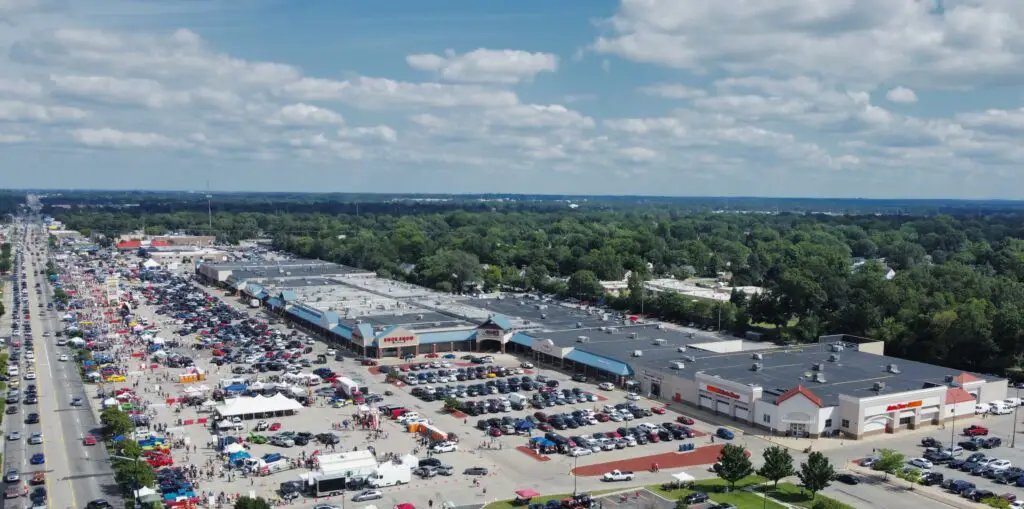
Expansion and Challenges in the Late 20th Century
By the 1970s, Rogers Plaza had established itself as a retail hub, but the developers weren't done expanding its offerings.
In 1971, Turn Style, a discount store, opened on the mall's eastern end. Its arrival was a notable addition, as previous attempts to secure an anchor for that space had failed.
However, this move wasn't without drama - Kresge, another tenant, filed a lawsuit against Turn Style over competitive concerns.
During the 1980s, Rogers Plaza stayed ahead of retail trends by embracing new technology. Stannard's Music, a well-known store within the mall, introduced shoppers to MIDI (Musical Instrument Digital Interface) technology.
They even hosted seminars to demonstrate MIDI's potential, drawing in tech enthusiasts and musicians.
In 1991, a fire at the Best Products store, one of the mall's tenants at the time, left three people hospitalized due to smoke inhalation.
Events like these, coupled with the closure of stores like Gantos in 1994, highlighted the challenges of maintaining foot traffic and attracting new businesses.
Efforts to reinvent the space continued throughout the decade. Bargain Books, once a tenant, relocated to a smaller unit, making way for OfficeMax, which opened in 1994.
The addition of a United States Postal Service outlet in 1998 also aimed to diversify the mall's utility for residents.
Yet, the opening of Rivertown Crossings Mall in nearby Grandville in 1999 created stiff competition, and shoppers were drawn away by its newer and larger facilities.
Renovation and Redevelopment in the Early 2000s
The turn of the century brought Rogers Plaza both challenges and opportunities. In December 2000, Montgomery Ward, one of the mall's original anchor stores, closed its doors after decades of operation.
This closure left a massive vacancy and displaced 140 employees. Shortly after, in May 2000, new ownership took over the mall, signaling a period of transition.
A major renovation project began in 2001 to revive the space. Over 14 months, the mall underwent extensive updates aimed at modernizing the facility and attracting fresh tenants.
The now-empty Montgomery Ward space was demolished, making way for a Family Fare supermarket and an AJ Wright discount store. These changes introduced grocery and discount retail options, expanding the mall's appeal.
The City of Wyoming also saw potential in the area. In 2002, city officials proposed a redevelopment plan that included extending a street westward from Rogers Plaza, cutting through Wyoming Village Mall, and ending at Studio 28.
The idea was to create a mixed-use district with businesses and apartments along the route. However, disagreements with Wyoming Village Mall's owners prevented the project from moving forward.
Despite these setbacks, the mall continued adapting. AJ Wright eventually closed in February 2011, replaced later that year by CW Price.
Ownership Changes and Market Adaptation
In June 2012, Sun Valley Ltd. acquired Rogers Plaza, marking another shift in ownership. At the time, the mall housed a mix of stores, including Big Lots, Harbor Freight Tools, Citi Trends, and OfficeMax.
This blend of discount retailers and specialty stores reflected the mall's evolving focus on value-oriented shopping.
Tenant turnover continued to shape the mall's identity throughout the mid-2010s. One of its larger tenants, Big Lots, closed in 2016. Shortly after, Planet Fitness opened its doors, introducing a fitness component to the mall's offerings.
Meanwhile, Family Fare, which had replaced Montgomery Ward years earlier, closed in 2019. AutoZone moved into this space, maintaining the mall's appeal to customers seeking practical and essential services.
OfficeMax followed suit and closed around the same time as Family Fare. These closures left noticeable gaps in the tenant roster but also created opportunities for reinvention.
New stores and services gradually filled the vacancies, underscoring the mall's ability to adapt to retail trends.
Ross Dress For Less was one of the newer additions, opening in the summer of 2023 to attract shoppers looking for affordable fashion.
The mall's flexibility in accommodating a mix of retail, fitness, and essential services has helped it remain relevant. While the rise of e-commerce and newer shopping centers posed challenges, Rogers Plaza continued to focus on serving the needs of Wyoming and Grand Rapids residents.
Current Status and Community Role
As of 2022, Spigel Properties, Inc. became the mall's new owner after Sun Valley Ltd. ceased operations and merged into the current ownership.
Under Spigel's management, the mall has maintained an occupancy rate of about 85% as of September 2023. Despite a few closures, such as the Kings Room barbershop, many tenants continue to operate successfully.
Today, the mall features various businesses, including Ross Dress For Less, Harbor Freight Tools, Ollie's Bargain Outlet, AutoZone Auto Parts, Planet Fitness, and the United States Postal Service.
These stores combine discount shopping, fitness, and essential services, ensuring that the mall caters to both daily errands and budget-conscious consumers.
Rogers Plaza has also retained its role as a hub for local events. The annual 28th Street Metro Cruise, held every August, transforms the mall's main parking lot into a lively gathering spot.
This event, which celebrates classic cars and local culture, keeps the mall connected to the community in a way that goes beyond shopping.
While its current offerings focus on practicality and affordability, the mall continues to attract visitors seeking a mix of retail and community experiences.

